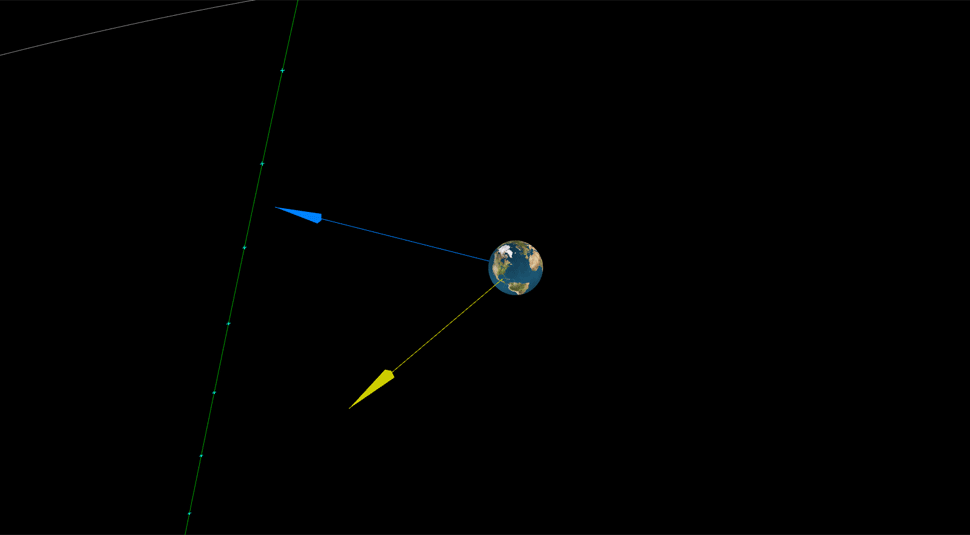
29th July 2017 Earth just had near-miss from undetected asteroid Astronomers have announced the surprise detection of a large rock, possibly up to 93 m (305 ft) in size, which hurtled past Earth last week.
At just one-third the Earth-moon distance, or 76,448 mi (123,031 km), the asteroid now named 2017 OO1 came within a whisker – in astronomical terms – of colliding with our planet. The object flew by at 23,200 mph (10.3 km/s) on 21st July at 03:33 UTC. However, it was only detected by the ATLAS-MLO telescope in Hawaii on 23rd July, two days after its closest approach. The object, with a very faint magnitude of 17.9, is very dark and likely to have a non-reflective surface that made it very difficult to spot. While asteroids of this size are too small to cause an extinction-level event, their speed and kinetic energy can still do enormous damage. Inputting the figures into an impact calculator shows that 2017 OO1 would enter our atmosphere with a force equivalent to 11.6 megatons of TNT. Breaking up at an altitude of 29.3 mi (47.1 km), it would hit the ground at 13,400 mph (6 km/s), with a blast of 3.32 megatons. That is over 200 times more powerful than the Hiroshima bomb of 1945. If on land, the impactor would produce a crater with radius of 2,132 ft (650 m) and depth of 820 ft (250 m). All buildings and most bridges within a radius of 1.6 mi (2.5 km) would be destroyed, with glass shattering up to 31 mi (50 km) away. If landing in the ocean, a megatsunami would be produced with waves of up to 500 ft (150 m) within a radius of 1 mile (1.6 km). These would decrease rapidly in height, to 62 ft (19 m) at a distance of 6.2 mi (10 km) but would have enough momentum to continue at 7 ft (2 m) height for over 62 mi (100 km). We may sometimes joke and make light of such catastrophes – they are a popular staple of science fiction. But asteroids can also be very real, as the Chelyabinsk event of 2013 made clear. That involved a rock that was much smaller than 2017 OO1, with only 1/7th as much energy. It is surely only a matter of time before such an incident occurs again somewhere in the world; perhaps in a major urban region. Indeed, the B612 Foundation showed in a presentation that asteroid impacts are more common than previously thought. Over 10,000 near-Earth objects have been discovered to date, of which nearly ten percent are larger than 3,280 ft (1,000 m). There are possibly ten times as many still waiting to be found within our Solar System. In related news, NASA will be using its network of observatories and scientists to track and characterise a small asteroid known as TC4 that will pass close to Earth on 12th October. Yesterday the agency provided more details of the initiative, which aims to test its worldwide asteroid detection and tracking abilities – assessing the capability of scientists to work together in response to a potential real asteroid threat. "Asteroids," Neil deGrasse Tyson once tweeted, "are nature's way of asking: 'How's that space program coming along?'" ---
Comments »
|







